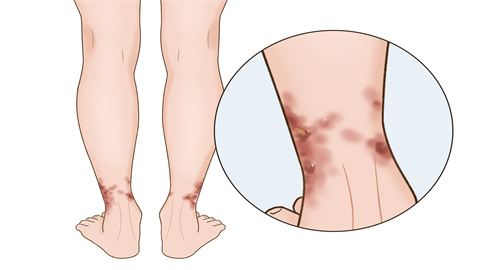How to treat chilblains and quickly eliminate them
Generally speaking, there is no such thing as a quick remedy for chilblains. Chilblains may be caused by factors such as poor cold tolerance of the skin, impaired blood circulation, anemia, Raynaud's phenomenon, diabetes, etc. Treatment or relief can be achieved through general care, medication, and other approaches depending on the individual situation. It is recommended to seek timely medical advice to identify the underlying cause and receive appropriate treatment under a doctor's guidance. Detailed explanations are as follows:

1. Poor cold tolerance of the skin: Due to individual differences, some people have a lower tolerance to cold, making their skin more susceptible to cold damage, which can lead to local circulatory problems and cause chilblains. Affected individuals should keep warm, add clothing promptly, and wear gloves.
2. Poor blood circulation: In cold winter conditions, peripheral blood vessels constrict, leading to poor circulation, tissue hypoxia in the skin, and a higher likelihood of developing chilblains, often accompanied by localized pallor and numbness. It is important to keep the affected areas warm and avoid exposure to cold temperatures in daily life.
3. Anemia: Insufficient red blood cell count or hemoglobin levels can impair oxygen delivery to tissues, making chilblains more likely to occur in cold conditions. Symptoms may also include pale complexion and fatigue. Patients may take medications such as ferrous sulfate sustained-release tablets, iron fumarate tablets, and Shengxuebao Syrup under medical supervision.
4. Raynaud's phenomenon: Exposure to cold or emotional fluctuations can cause intense vasoconstriction in the fingers or toes, impairing blood circulation and making chilblains more likely, often accompanied by pain or numbness. Patients can take medications such as verapamil hydrochloride tablets, nifedipine tablets, and amlodipine besylate tablets under a doctor's guidance.
5. Diabetes: Nerve damage and microvascular complications make peripheral blood circulation more vulnerable, increasing the risk of chilblains, which may be accompanied by symptoms such as thirst and frequent urination. Patients may take medications such as acarbose capsules, glimepiride tablets, and gliquidone tablets under medical supervision.
During treatment, avoid soaking the affected area in excessively hot water or scratching the lesion to prevent skin damage and worsening infection.





